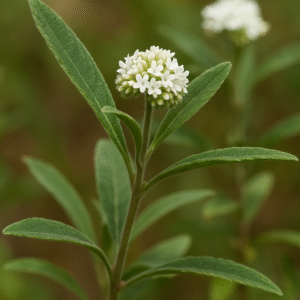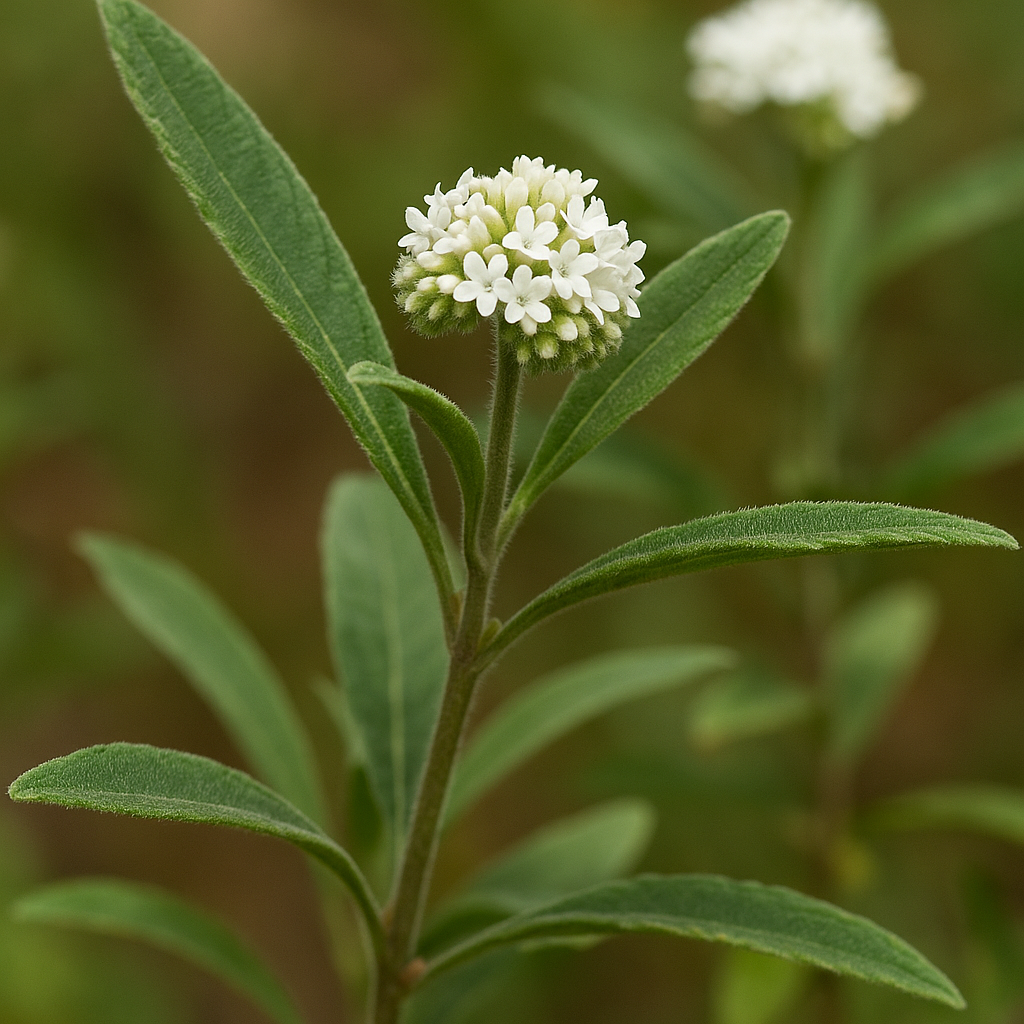Varronia curassavica, popularly known in Brazil as “erva-baleeira”, is a medicinal plant native to the Atlantic Forest and widely recognized for its potent anti-inflammatory properties. Used for generations by indigenous and coastal communities, this plant has been gaining attention in the medical and botanical fields for its proven therapeutic benefits and ease of cultivation.
In this article, you’ll learn about the origins, medicinal uses, and growing conditions of Varronia curassavica, as well as how to incorporate it into your indoor herb garden using modern plant support systems.
Botanical Features of Varronia curassavica
Varronia curassavica is a fast-growing shrub that typically reaches between 1.5 and 2 meters in height. It features elongated, serrated, velvety leaves with a strong aromatic scent when crushed. The plant produces small white tubular flowers in clustered formations throughout the year, attracting bees and pollinators. It also bears small dark fruits known as drupes.
This plant thrives in tropical and subtropical climates, particularly in coastal zones of South America. It prefers well-drained, fertile soils and environments with high humidity. Because of its resilience, it’s common to find it growing spontaneously along forest edges, roadsides, and gardens in Brazil.
Medicinal Properties Backed by Science
Varronia curassavica is best known for its anti-inflammatory effects. Scientific studies have shown that the plant’s extract can inhibit inflammatory enzymes such as COX-2, which is also the target of many commercial anti-inflammatory drugs. However, unlike synthetic pharmaceuticals, the plant tends to produce fewer side effects.
Other recognized medicinal properties include:
-
Analgesic – Useful in relieving muscle and joint pain, including back pain and arthritis.
-
Antiseptic – Helps prevent minor infections.
-
Cicatrizant – Supports skin regeneration and wound healing.
-
Antibacterial – Effective against certain strains of harmful bacteria.
Thanks to these benefits, the plant is often found in ointments and herbal medicines formulated to treat sprains, inflammation, rheumatic conditions, and post-exercise recovery.
Common Ways to Use Varronia curassavica
Traditionally, this plant is used in several formats:
-
Topical creams or ointments: These are applied directly to the affected area to reduce pain and inflammation.
-
Herbal infusions or teas: Made from dried or fresh leaves, these are consumed under guidance to relieve internal inflammation.
-
Tinctures: Concentrated alcohol-based extracts used sparingly for more potent effects.
It is essential to consult a professional before ingesting the plant, as dosages and interactions may vary based on individual health conditions.
How to Grow Varronia curassavica at Home
If you’re interested in herbal medicine and want to start your own indoor or outdoor herb garden, Varronia curassavica is a low-maintenance and rewarding choice.
Cultivation tips:
-
Lighting: The plant prefers full sun but can also adapt to environments with adequate artificial lighting.
-
Watering: Keep the soil moist, but avoid overwatering. Regular watering is especially important during dry seasons.
-
Soil: Use nutrient-rich organic soil with good drainage.
-
Pruning: Pruning the tips of the branches encourages a bushier shape and increases leaf production.
-
Pest control: Varronia is relatively pest-resistant, but routine inspection is still recommended.
When grown indoors, Varronia curassavica does very well with the aid of grow lights and structured shelving to simulate natural growth conditions.
Ecological Importance and Cultural Value
Beyond its medical relevance, cultivating native plants like Varronia curassavica also contributes to the preservation of Brazil’s botanical heritage. The traditional knowledge surrounding its use is part of the rich cultural fabric of the country and deserves to be safeguarded through sustainable practices and education.
If you’re passionate about health, self-sufficiency, and biodiversity, growing medicinal herbs at home is a great place to start.

To help your indoor garden flourish, especially with medicinal herbs like Varronia curassavica, we recommend the Indoor Plant Stand with Grow Lights – 7-Tier Metal Shelf – Corner Wood Plant Holder for Indoor Plants, Large S-Shaped Flower Display. This elegant yet functional support allows you to grow multiple species indoors, even in low-light conditions, while maximizing your space beautifully.
The Arrowhead Plant is more than just a decorative plant — it brings freshness,
elegance, and health benefits to your living space.
Discover the top 5 reasons to grow it at home!

